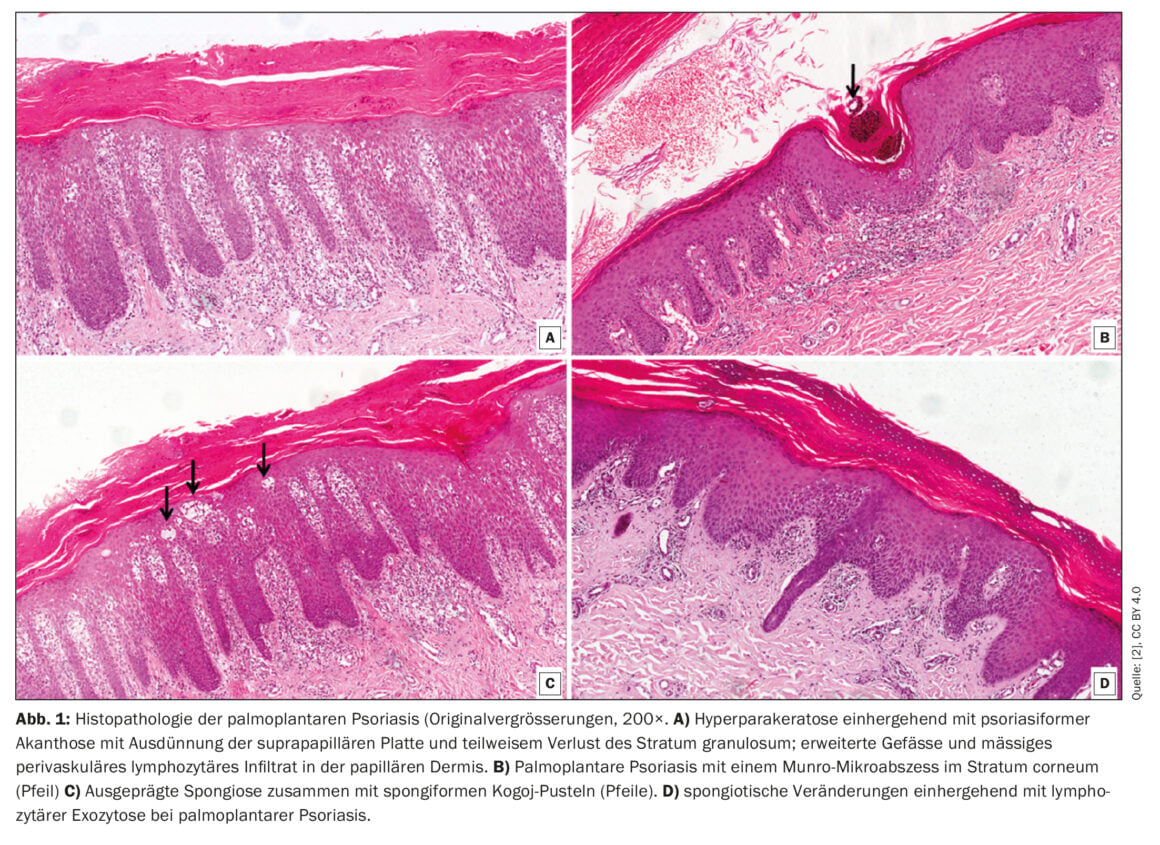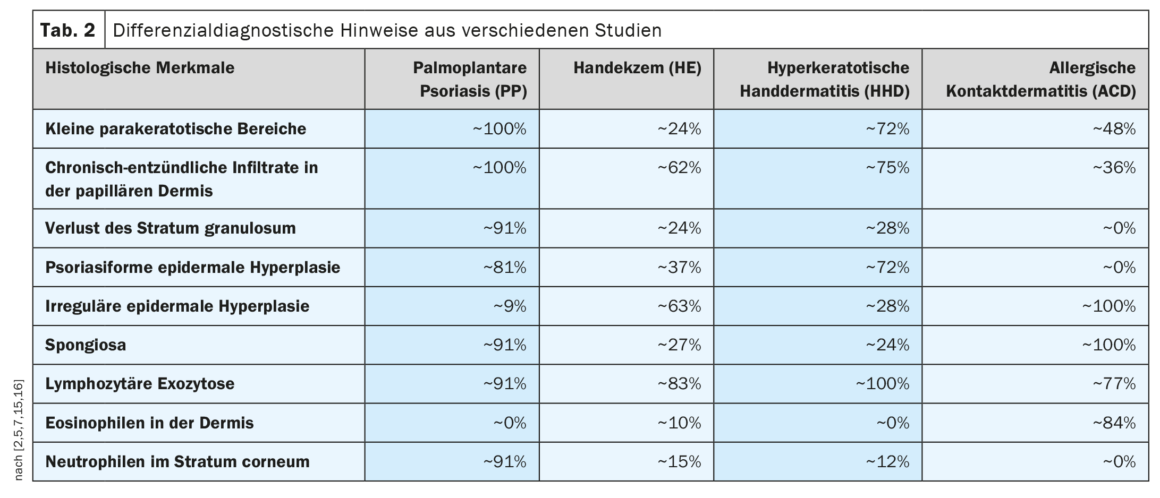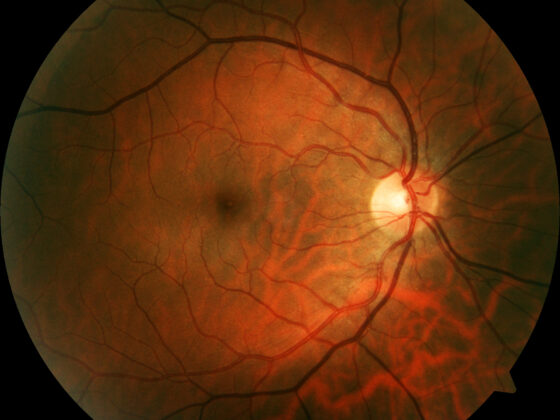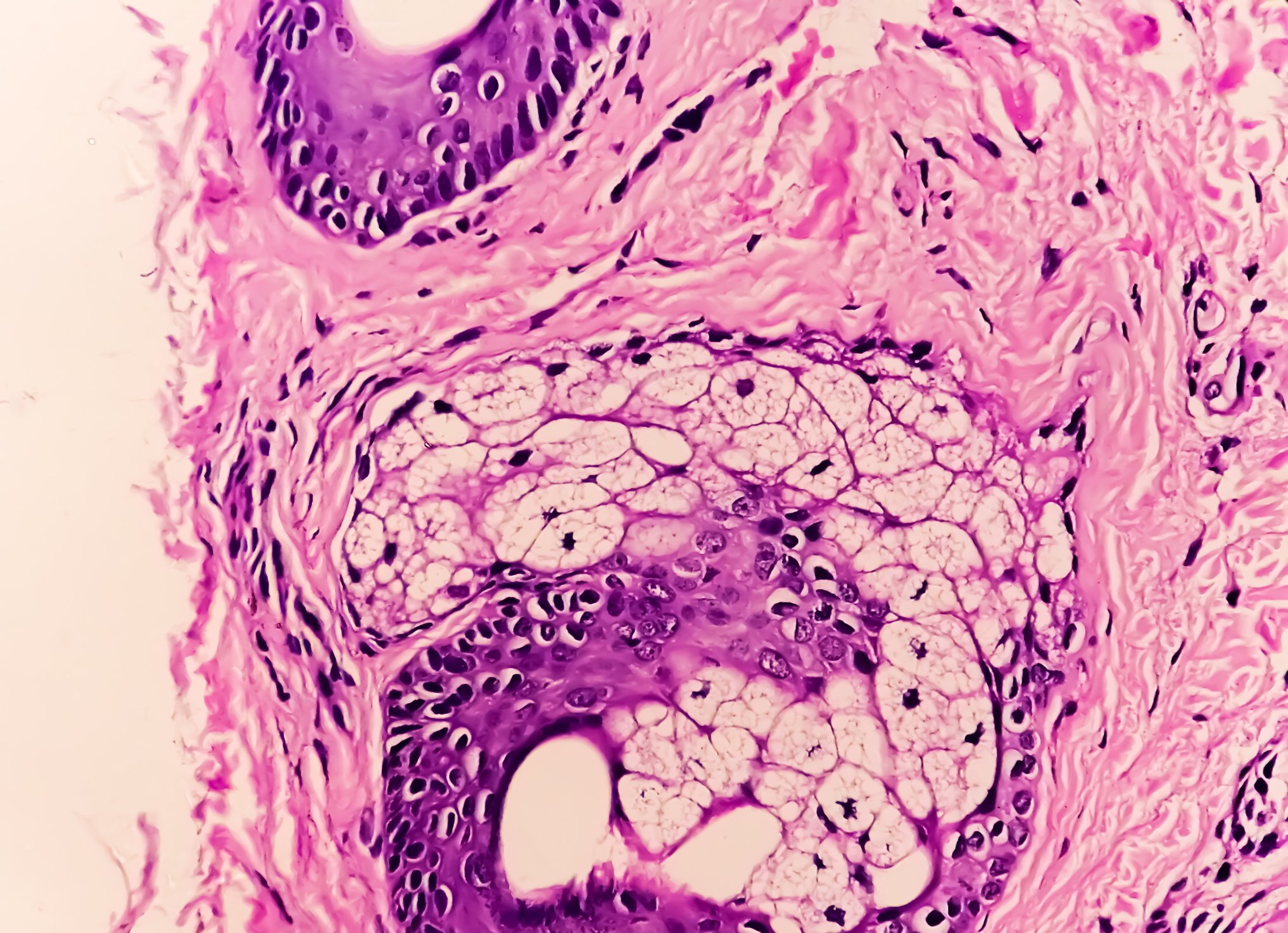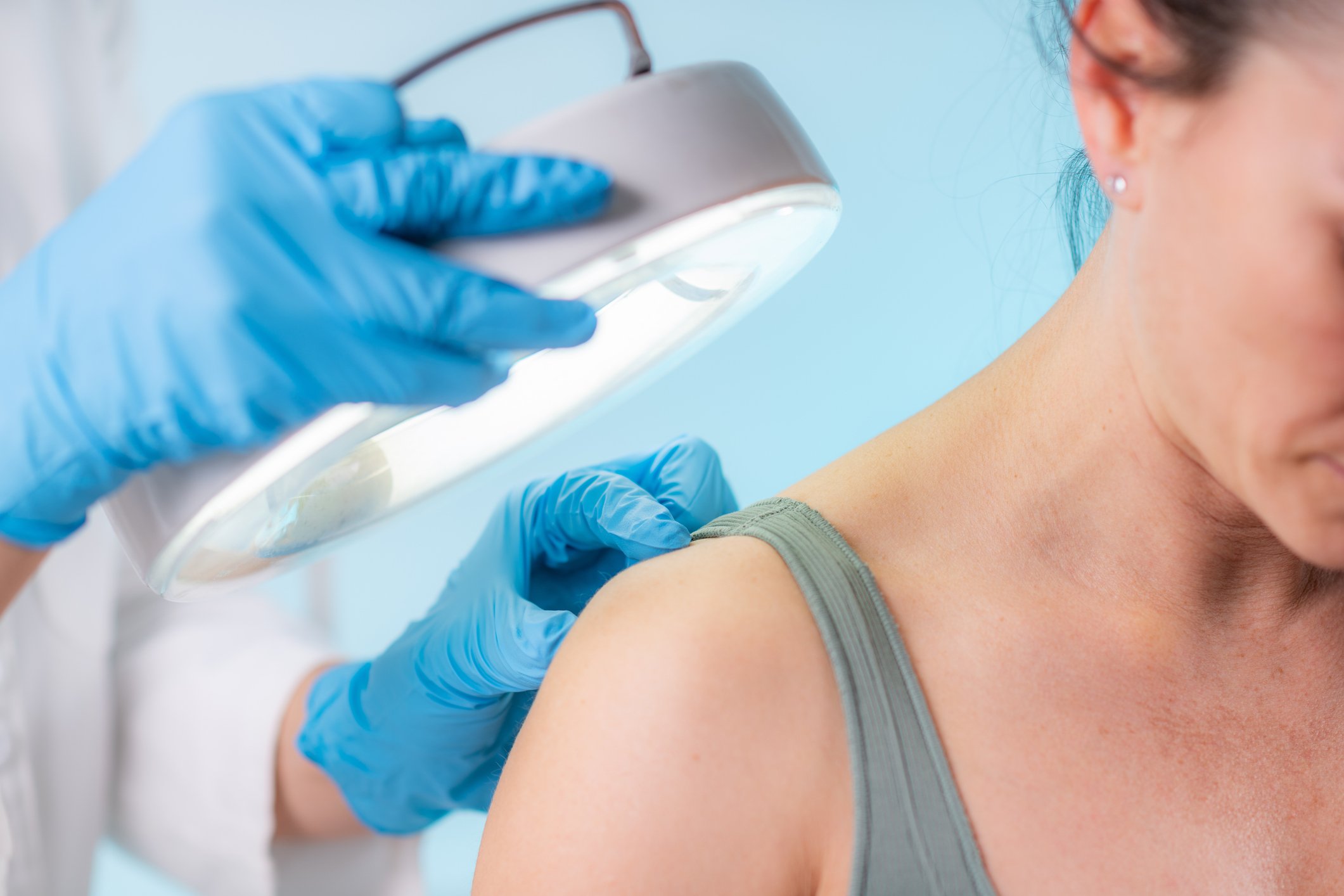Because many clinical and histopathologic features of palmoplantar psoriasis (PP) overlap with those of other dermatoses, differential diagnosis is far from trivial. With this in mind, a research team analyzed biopsies from patients with PP as part of a retrospective case series. Parakeratosis alternating with orthokeratotic areas, degeneration of the stratum granulosum, and neutrophils in the stratum corneum indicate PP, the researchers concluded.
Psoriasis palmoplantaris (PP) is a relatively rare variant of psoriasis that affects the palms and soles of the hands (box). Clinically, hyperkeratotic PP presents as sharply demarcated erythematous plaques with white-silvery scaling on the palmae and plantae. The lesions are usually symmetrically distributed. Infestation of the hands and feet usually begins unilaterally, but is later almost always pronounced bilaterally. In the course of the disease, fissures and rhagades may develop, especially on the flexor lines of the hands and feet [1]. PP is thought to have a multifactorial etiopathogenesis.
An association with the human leukocyte antigen HLA-Cw6 was identified. Trigger factors include smoking, certain detergents, seasonal changes, and repeated mechanical impact [2–4]. When PP is suspected, the differential diagnosis must exclude various dermatoses, including contact dermatitis, pityriasis rubra pilaris, acquired keratosis palmoplantaris, and tinea pedis/manuum. However, psoriasis pustulosa palmoplantaris (PPP) (box) and acrodermatitis continua suppurativa (Hallopeau’s disease), and other dermatoses should also be considered [2].
Case series: biopsies from 21 patients
For the case series, all PP cases recorded from January 2017 to July 2022 were screened for the following inclusion criteria [2]:
- (i) no known allergies (negative patch test)
- (ii) no topical or systemic treatment in the previous month.
- (iii) in the case of pustular lesions, a negative microbiological smear.
Cases in which other papulo-squamous diseases, including acrodermatitis continua suppurativa (Hallopeau’s disease), were suspected or proven were excluded by the investigators. A total of 21 patients met the inclusion criteria, of which 57.14% were male and 42.86% were female, and the mean age was 47.76 years (age range 22-71 years). Sections stained with hematoxylin-eosin (H&E) were evaluated by two pathologists. Features such as cancellous bone, lymphocytic exocytosis, congested/dilated blood vessels in the papillary dermis, perivascular lymphocytic infiltrates, and psoriasiform acanthosis were scored on a scale.
Results of histopathological evaluation
Table 1 summarizes the histologic features identified in the PP case series [2]. All 21 biopsies showed parakeratosis and parakeratotic areas, which alternated both vertically and horizontally with orthokeratotic areas (Fig. 1A). The stratum granulosum presented as normal in two biopsies, whereas degeneration or focal loss of the granular layer was observed in the remaining 19 (Fig. 1A). In all biopsies, the papillary dermis showed congested and dilated blood vessels (Fig. 1A). In three cases, this finding was focal, in 12 it was more diffuse/moderate, while in six cases it was strikingly pronounced. Psoriasiform acanthosis of the epidermis was observed in 17 cases (Fig. 1A). In 14 of these, the acanthosis was particularly accentuated by a marked elongation of the rice ridges, whereas in the remaining three cases it was focal in nature.
All biopsies showed a variable degree of perivascular lymphocytic infiltrate (Fig. 1A), which was sparse and focal in two cases, moderate in five, and diffuse and abundant in the remaining 14 cases. Munro microabscesses, a typical feature of classic plaque psoriasis, were a common finding (Fig. 1B) . Only two cases did not have them, whereas they were present in the remaining 19. On the other hand, spongiform pustules according to Kogoj were found in only three of the biopsies (Fig. 1C).
The spongiosis typical of eczema was absent in only two cases, focal in 11, moderate in four, and marked in the remaining four. The extent of spongiosis correlated with the extent of lymphocytic exocytosis (Fig. 1D): areas with normal epidermis did not show lymphocytic exocytosis, whereas spongy areas always showed some lymphocytic exocytosis, which was more severe the more pronounced the spongiosis, and vice versa.
Discussion and conclusions
Histopathological examination is the most important diagnostic tool in unclear cases. Since biopsy reflects the clinical picture, it should be performed before treatment when lesions are clearly visible. Biopsies should preferably be obtained from the palms, as the lower limbs and feet may have interfering factors, such as serum in the stratum corneum. In particular, the differential diagnosis between PP and hand eczema (HE) or hyperkeratotic hand dermatitis (HHD) is often difficult due to overlapping clinical findings (Table 2) [2,5]. Park et al. observed loss of stratum granulosum more frequently in PP than in HE or HHD [5]. They also found that psoriasiform epidermal hyperplasia was significantly more common in PP and HHD than in HE. In contrast, irregular epidermal hyperplasia is more common in HE [5]. An et al. also observed that confluent parakeratosis, an absent granular cell layer, and psoriasiform epidermal hyperplasia were more common in psoriasis palmaris and HHD than in chronic hand dermatitis [6]. Rao et al. concluded in a comparison of PP cases and HHD that these two diseases share many common features, such as focal parakeratosis, neutrophils in the stratum corneum, hypogranulosis, acanthosis, spongiosa, reteleistae [7]. Confluent parakeratosis and suprapapillary thinning were more common in PP biopsies, whereas an inflammatory infiltrate confined to the papillary dermis was a feature of palmoplantar dermatitis [7].
Differential diagnoses of PP include allergic contact dermatitis (ACD) [8]. Cesinaro et al. found in a study that regular epidermal hyperplasia and marked parakeratosis were more common in PP than in ACD [9]. In agreement with previous studies [5,7], Broggi et al. observed. Multiple parakeratotic foci alternating with ortho-hyperkeratosis, regular epidermal hyperplasia, and marked parakeratosis, more common in PP than in ACD [2]. On the other hand, irregular epidermal hyperplasia and a higher number of S100 protein-positive dendritic cells favor the diagnosis of ACD. In addition, eosinophils, as well as dilated and tortuous capillaries in the dermis, which are common in allergic contact dermatitis, are not typical of lesions in palmoplantar psoriasis.
Literature:
- Hoffmann AJ: Investigation of the impairment of quality of life in patients with psoriasis palmoplantaris and psoriasis pustulosa palmoplantaris. 2022, https://edoc.ub.uni-muenchen.de/30769/7/Hoffmann_Angelika.pdf, (last accessed Mar. 14, 2023).
- Broggi G, et al: Palmoplantar Psoriasis: A Clinico-Pathologic Study on a Series of 21 Cases with Emphasis on Differential Diagnosis. Diagnostics 2022; 12(12):3071. www.mdpi.com/2075-4418/12/12/3071#,
(last call 03/14/2023) - Farley E, et al: Palmoplantar psoriasis: A phenotypical and clinical review with introduction of a new quality-of-life assessment tool. J Am Acad Dermatol 2009; 60: 1024-1031.
- Pettey AA, et al: Patients with palmoplantar psoriasis have more physical disability and discomfort than patients with other forms of psoriasis: implications for clinical practice. J Am Acad Dermatol 2003; 49: 271-275.
- Park JY, et al: The histopathological differentiation between palmar psoriasis and hand eczema: A retrospective review of 96 cases. JAAD 2017; 77: 130-135.
- An MK, et al: Differential histopathological and immunohistochemical findings between palmar psoriasis and chronic hand eczema. Eur J Dermatol 2020; 30: 710-715.
- Rao A, Khandpur S, Kalaivani M: A study of the histopathology of palmo-plantar psoriasis and hyperkeratotic palmo-plantar dermatitis. Indian J Dermatol Venereol Leprol 2018; 84: 27-33.
- Ferreli C, et al: Histopathological aspects of psoriasis and its uncommon variants. G Ital Dermatol Venereol 2018; 153: 173-184.
- Cesinaro AM, et al: Psoriasis vs allergic contact dermatitis in palms and soles: A quantitative histologic and immunohistochemical study. APMIS 2009, 117, 629-634.
- Plewig G,Ruzicka T, Kaufmann R, Hertl M. Braun-Falco’s Dermatology, Venereology and Allergology. Springer Verlag: Berlin, 7th edition, 2018.
- Griffiths CE, et al: A classification of psoriasis vulgaris according to phenotype. Br J Dermatol 2007; 156(2): 258-262.
- de Waal AC, van de Kerkhof PC: Pustulosis palmoplantaris is a disease distinct from psoriasis. J Dermatolog Treat 2011; 22(2): 102-105.
- Brunasso AM, et al: Clinical and epidemiological comparison of patients affected by palmoplantar plaque psoriasis and palmoplantar pustulosis: a case series study. Br J Dermatol 2013; 168(6): 1243-1251.
- Andersen YMF, et al: Characteristics and prevalence of plaque psoriasis in patients with palmoplantar pustulosis. Br J Dermatol 2019; 181(5): 976-982.
- Rosa G, et al: Langerhans cell collections, but not eosinophils, are clues to a diagnosis of allergic contact dermatitis in appropriate skin biopsies. J Cutan Pathol 2016, 43, 498-504.
- Fülle M, et al: Psoriasis on the Leg: Site-specific Histopathological and Immuno-histochemical Features and Diagnostic Difficulties. Acta Derm Venereol 2021, 101, adv00453.
DERMATOLOGIE PRAXIS 2023; 33(2): 25-27



